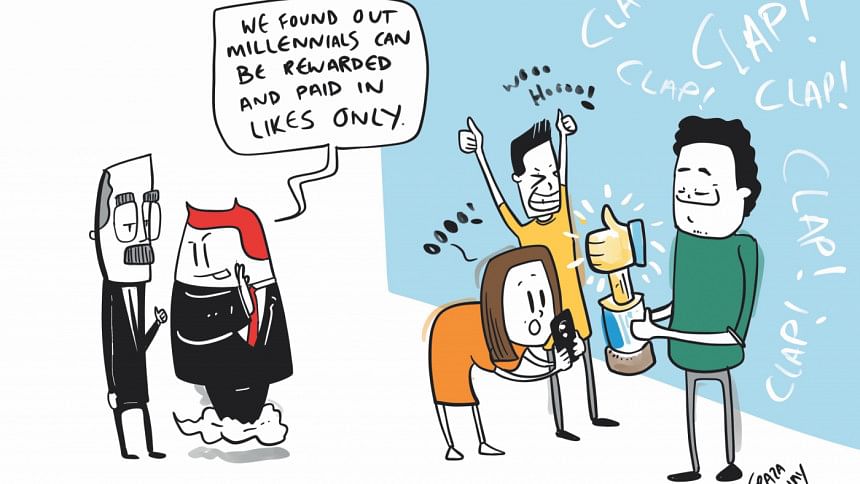Common workplace trends

Every year brings in unique and sometimes unusual trends in the workplace. These emerging workplace trends impact the business strategies and can bring about changes in the organisational culture. The dynamic clock speed of technology, demographic shifts, increasing mobility, etc. affect the business and subsequently the larger industries. Businesses today are adapting to these changes and trends.
TECHNOLOGY ON-THE-GO
It would be impossible to talk about workplace trends without acknowledging the role of technology as a key enabler. The development of technology has made it possible for people to work outside their main offices, thanks to the ubiquity of Wi-Fi and mobile devices such as smartphones, tablets, laptops, etc. It is thus possible for employees to carry out their tasks and remain cost effectively connected with their team or their management.
THE MILLENNIAL EFFECT
The changing workforce is impacting workplace culture. As newer generations are growing up and invading the workplace, they are bringing in their own set of values. Their attitude towards work-life balance is introducing and dictating the norm in the workplace. Millennials, belonging to a generation that is completely aware of how impossible it is for them to switch off technology and make themselves unavailable for even a few hours, are making use of this phenomenon to complete their work tasks freely from any location they choose.
FLEXIBLE WORKING HOURS
From spending more time with families and friends, to cutting down on commute time and finding more time to relax, employees prefer flexible working for a number of reasons and it has become a key differentiator when people are faced with a choice between similar jobs. This trend is important for employers who are seeking to acquire top talents, as today it's not just salary that makes a difference.
THE CHANGING FACE OF THE WORKFORCE
Today's workforce is increasingly composed of freelance workers and consultants as well as part-time workers who actively seek out opportunities to work more flexibly and remotely according to their own terms.
THE RISE OF GIG ECONOMY
As more and more companies are seeing increased turnover, gig economy is on the rise globally and Bangladesh is no exception. Younger employees indicate that they are significantly more likely to leave their organisations within five years or less, than to stay behind beyond that, which is why businesses are moving away from trying to get employees to stick around for longer and are instead opting for gig economy. This trend is prominent in industries that have changing labour demands for different projects.
COLLABORATION
As connectivity increases, so does the number of platforms through which employees, employers and clients communicate. Increased collaboration is what the workplaces are trending towards. Collaboration centralises communication and reduces inefficiency by saving time, energy, resource and effort.
DIVERSITY IN THE WORKPLACE
As companies grow more transparent, the diversity conversation takes a step in the right direction. Progression of women is being taken seriously, despite the slow pace at which it's happening. Difference in the male and female participation rate is an important feature. Female labour force participation has risen substantially in the recent years and although the rate declined slightly in 2010-2013, the participation has since grown consistently. More and more females are taking up diverse roles and job positions in the workplace.
THE HIKE IN PAID LEAVES
More and more companies are beefing up their paid leave policies to tend to the needs of increasing number of millennial parents each year.
ALL ABOUT YOU
Consumer data has been a hot issue for businesses but companies are starting to gather more information about employees. With a greater presence of technology and social media in the workplace, employers now have a greater ability to collect employee data and analyse employee behaviour. It is necessary to be careful about the data being collected and used. Employees should be educated and informed regarding data collection at workplaces, as they would be in their personal lives.
RETHINKING TRADITIONAL PERFORMANCE REVIEWS
Traditionally, performance reviews are held once a year. According to this, people would work on a year-end basis, collaborate with colleagues, finish projects and meet deadlines. Now, employers are starting to give more detailed and responsive feedback through monthly reviews. More frequent performance reviews clarify objectives and help to improve employee morale.
The trends discussed above are some of the most prominent new changes experienced by employers and employees alike. Other trends like employee well-being programs, valuing team performance over individual performance, etc. are also on the rise which are affecting how companies and businesses are shifting their processes and business strategies.
Nabila Hossain is a senior at Institute of Business Administration, University of Dhaka. Reach her at [email protected].

 For all latest news, follow The Daily Star's Google News channel.
For all latest news, follow The Daily Star's Google News channel. 



Comments